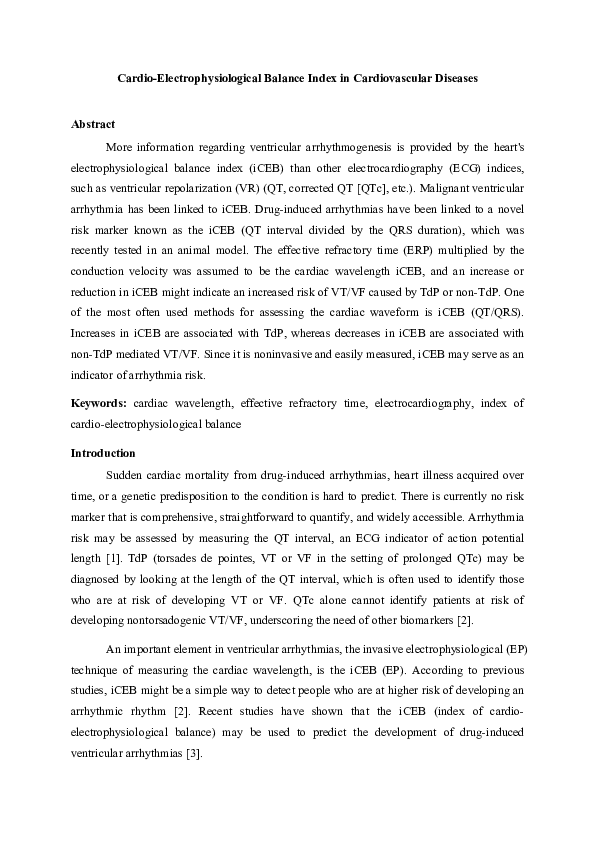Supplementary Material
Cardio-Electrophysiological Balance Index in Cardiovascular Diseases
Preprint |
10.55415/deep-2022-0028.v1
This is not the most recent version. There is anewer
versionof this content available.
Abstract
More information regarding ventricular arrhythmogenesis is provided by the heart's electrophysiological balance index (iCEB) than other electrocardiography (ECG) indices, such as ventricular repolarization (VR) (QT, corrected QT [QTc], etc.). Malignant ventricular arrhythmia has been linked to iCEB. Drug-induced arrhythmias have been linked to a novel risk marker known as the iCEB (QT interval divided by the QRS duration), which was recently tested in an animal model. The effective refractory time (ERP) multiplied by the conduction velocity was assumed to be the cardiac wavelength iCEB, and an increase or reduction in iCEB might indicate an increased risk of VT/VF caused by TdP or non-TdP. One of the most often used methods for assessing the cardiac waveform is iCEB (QT/QRS). Increases in iCEB are associated with TdP, whereas decreases in iCEB are associated with non-TdP mediated VT/VF. Since it is noninvasive and easily measured, iCEB may serve as an indicator of arrhythmia risk.


